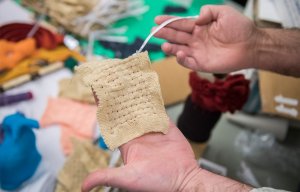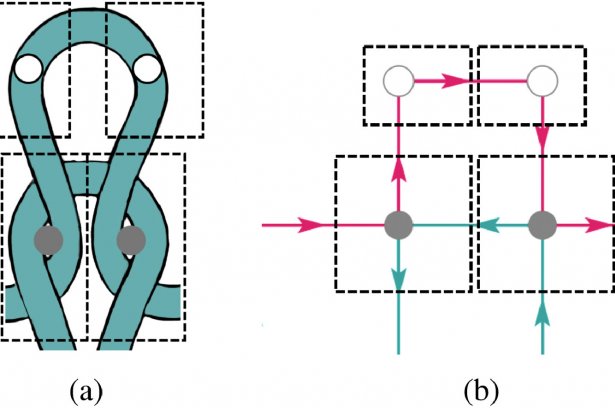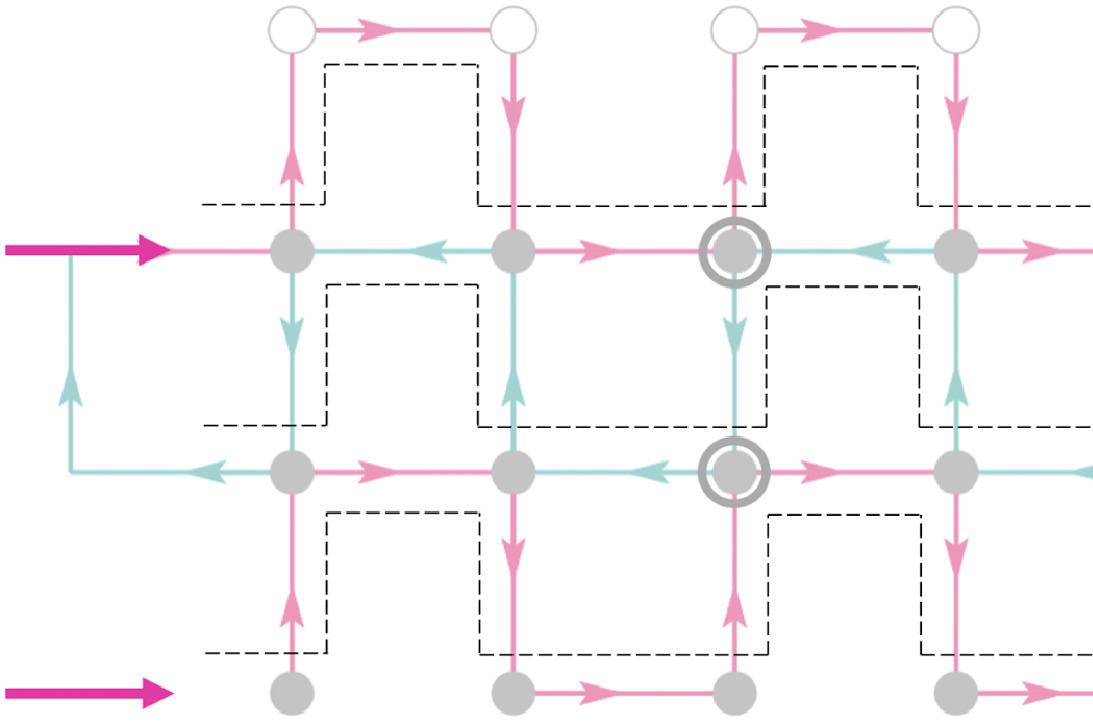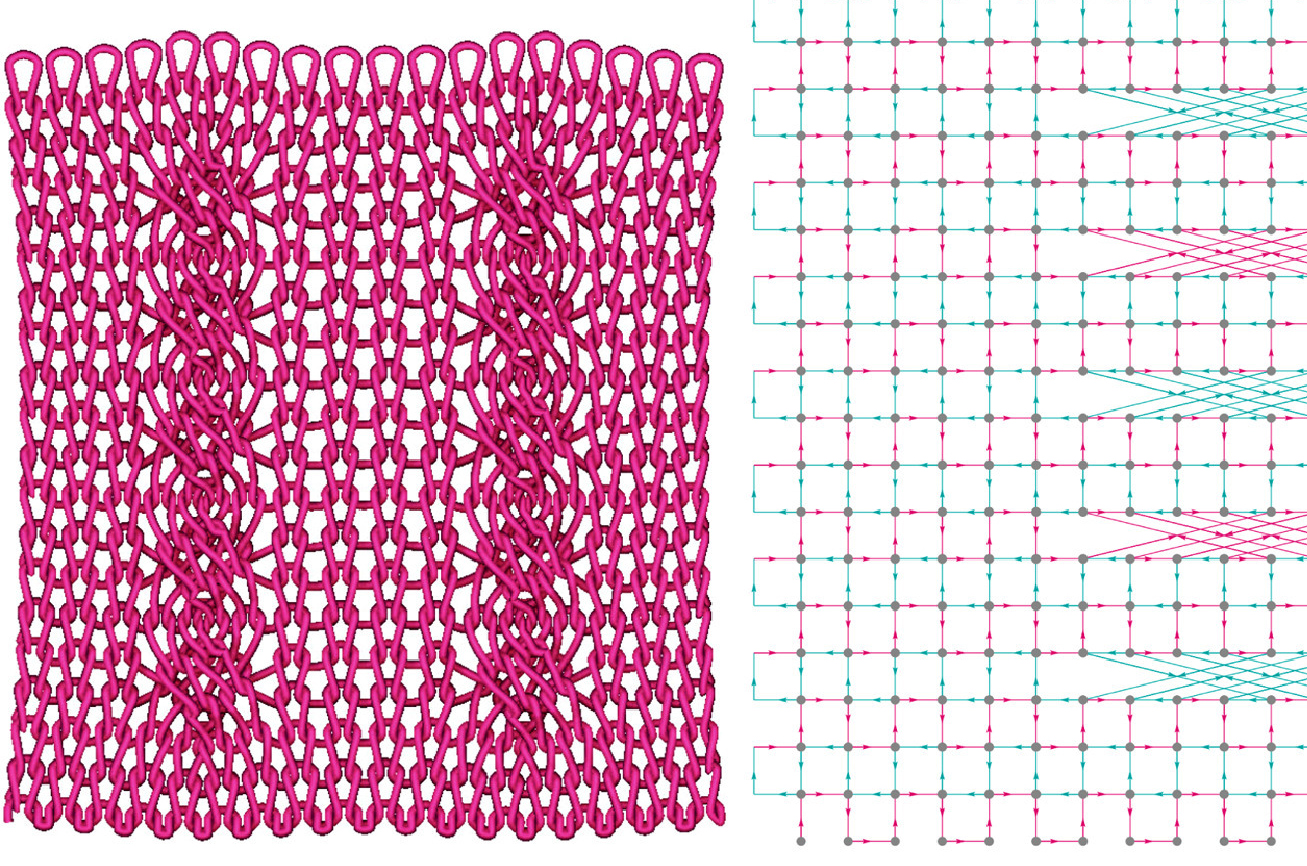
Another step towards on-demand machine knitting?
Topology graphs allow designers to pinpoint where a piece of yarn is, with respect to the overall plane of the textile, at any given point within it.

28th February 2022
Knitting Industry
|
Philadelphia, PA, USA
A team of researchers at Drexel University is translating the loops and twists of knitting into a digital architecture, as a key step in the process of incorporating new technologies such as electronic circuits into textiles.
While the promise of textile-embedded technology, or smart fabrics has been on the horizon for decades, it has primarily been realised in the form of high-performance and technical military gear and high-end fashion concepts, the researchers say, and in most of these garments, technology is an external addition, rather than an integrated feature of the design.
One of the greatest barriers to full integration of technology into textiles and the broader retail adoption of smart fabrics – according to David Breen, a professor at Drexel’s College of Computing and Informatics who has been computer modelling fabric since the 1990s – is that current software used for the industrial design and production of textiles lacks the thread-level detail necessary for the digital sampling and precision manufacturing of fabric devices.
“In order for these technical textiles to be widely deployed and reach their full industrial potential, computer-based modelling and simulation tools must be developed to support the design and optimisation of knitted structures,” he said.
Algorithms
TopoKnit is a suite of algorithms developed by Breen’s research team as a tool for modelling the path of a yarn within a knitted textile and while it doesn’t solve the entire modelling challenge, it provides an essential element of the design process – documentation of how parts come together to make a finished piece – the equivalent of a blueprint in architecture.
TopoKnit translates stitch commands, such as knit, purl and transfer, as they would appear in a knitting pattern, or the programme of a digital knitting machine, into a map that shows where the yarn travels, loop by loop, and how it interacts with adjacent loops as the textile is formed. The resulting diagram, called a topology graph, allows designers to pinpoint where a piece of yarn is, with respect to the overall plane of the textile, at any given point within it.

Building up this baseline design information for knitting is coming at a time when more researchers are considering knits for making functional fabrics. Breen suggests this is partly because knitting supports more intricate yarn interactions than weaving, which is advantageous for creating electronic circuits. In addition, knitting allows for more controllable design touch points, as well as the ability to generate 3D shapes without added manufacturing steps, such as cut and sew.
Microstructure
“What’s interesting about knitting is that, at the stitch level, it has a completely programmable microstructure,” Breen explained. “Knitting is a kind of programming that maps stitch operations to specific physical structures. Because you have the loops forming many different connections, it is more complex than weaving and knitted fabrics have always been more difficult to model than woven fabrics. But it gives designers more entry points to manipulate various aspects of the material, which makes it very promising for building in new functionality.”
To put TopoKnit to the test, Breen’s doctoral student Levi Kapllani Maharaj worked with research partners and designers at Drexel’s Centre for Functional Fabrics to generate a series of 100 patterns of 5x5 stitch configurations using the graphics interface on one of the centre’s digital knitting machines. The same stitch commands that went into the machine were also entered into TopoKnit to produce a topology graph. The team compared each graph to its corresponding graphic rendering to see if the stitch map matched the rendered model.

The graphs were an exact match in each case, showing that the TopoKnit system could be used to reliably produce manufacturing instructions for knit textiles via a sequence of steps that produces specific yarn topologies. These topologies – descriptions of how the yarns contact and interconnect with each other – allow the system to flag stitch patterns in a design that would not be viable in production, which is an important step for prototyping.
While the accuracy of TopoKnit is important, Breen noted that it is still just the first of many steps towards a textile modelling program that can represent and simulate functional fabrics.
For any kind of high-level computer modelling, a topology graph is the foundation on which more noticeable characteristics, like shape, strength and movement, are built. But for textiles, that foundation was never established, because the process of churning out products was usually more urgent than redesigning them for high-level performance tools.
Engineering disconnect
“It is ironic that fabric is one of the oldest human-created materials, but modelling it has proven to be extremely challenging and computationally expensive.” Breen said. “Steel beams are easier to study and model than knitted fabrics, because fabrics do things like stretch and twist and vast amounts of computational power are required when modelling them in the ways similar to that steel beam.”
Despite this engineering disconnect, research and development around functional fabrics has gained momentum mainly due to government projects focused on specific performance goals, like embedding communications or vital sign-monitoring technology into military uniforms. But to do this, the field has relied heavily on the expertise of individual designers and fabricators with deep experience in knitting.
The benefit of enhanced textile design platforms, Breen suggested, is that it would open up textile design to people with expertise in other areas, like electrical engineering or materials science. Topoknit is a technology-agnostic approach to developing tools for interoperability across machines and modelling platforms. And because it would allow designers to try new approaches with a better gauge on what will work – rather than spending time and resources on trial and error – better modelling should enable efforts more closely linked to consumer goods.
“Some of these materials are really expensive,” Breen said. “You can’t afford to do trial and error testing because of the limited supply of some of these advanced fibres and yarns. The vision for computer-aided design is that you model, simulate and explore the design space. You do it all virtually, computationally, so you don’t have to go through the expensive process of making it and then seeing if it works. Or you could at least explore the design options and narrow down the tests you want to do with the finished piece.”
Being able to plot the path of yarn within a knit textile will allow designers to incorporate functionality, like electric circuits, into knit materials with predictable and repeatable results.
Optimisation
Building on the topology framework provided by TopoKnit, the next step for this research is to optimise the shape and behaviours of knitted textiles. Ensuring accuracy and modelling the shape will prime computer programmes to meticulously reproduce the mechanical properties of textiles and ultimately direct knitting machines to produce textiles with specific performance capabilities.
“If we’re going to see the potential of smart fabrics fully realised, we need to get to the point where knitting is even easier than 3D printing – where you can put in all the desired parameters from size and shape to flexibility and thermal or electrical conductivity and press ‘go’ and a knitting machine will produce it,” Breen concluded. “This work is putting us on the path towards that reality.”

Business intelligence for the fibre, textiles and apparel industries: technologies, innovations, markets, investments, trade policy, sourcing, strategy...
Find out more